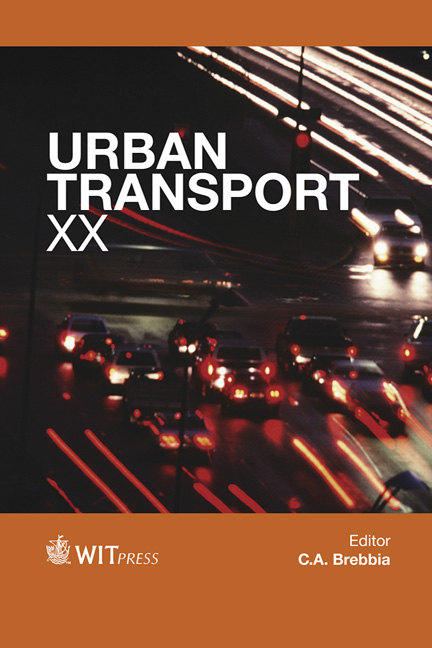The Impact Of Transport Management On The Local Activities System: The Role Of Limited Traffic Zones
Price
Free (open access)
Transaction
Volume
138
Pages
10
Published
2014
Size
961 kb
Paper DOI
10.2495/UT140551
Copyright
WIT Press
Author(s)
L. Biggiero
Abstract
The impacts of transportation in planning land use and activities are not always intended and can have unforeseen or unintended consequences such as congestion or evident impacts on the local economy where the interventions are conceived. This is the case for Limited Traffic Zones (LTZs), i.e. areas where cars are not allowed in them. In this paper, the impact of these measures on the local economy is analysed, considering as a case study the town of Napoli in the south of Italy, where two Limited Traffic Zones, in two different boroughs and years, named Vomero and Chiaia, have been introduced. Moreover, the impacts due to changes involving one of the LTZ’s areas are also observed and analysed through a before-after survey. The direct impact on traffic congestion has not been taken into account. More than 30% of all activities have been interviewed in the two restricted areas and some key points have been assessed for the successful or unsuccessful of car restriction measure. Retailers were also asked about their decrease in turnover in order to evaluate the effects of the LTZ’s area after taking into account the actual economic crisis. The survey showed how much the retailers require: efficient public transport; parking places as close as possible; residential and activity density and typology. Those are the main reasons for the success of the Vomero LTZ zone and of the failure of the Chaia restricted zone. Other revealed indicators gathered in the survey confirmed the results underlying the attractiveness of the subzone of Chiaia that is a string of restaurants close to the seafront.
Keywords
limited traffic zones, impacts on local economy, local public transport accessibility.





